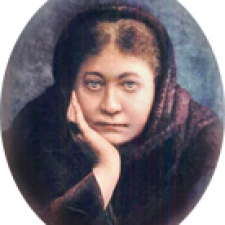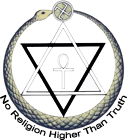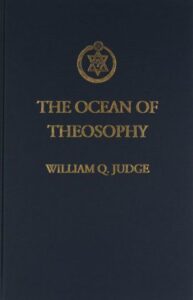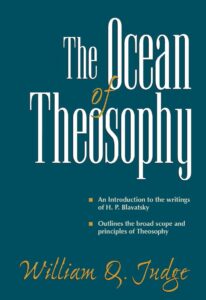Studies In The Ocean of Theosophy Part XI
Theosophy Magazine
Vol. 21, No. 11 September 1933
pages 513 - 516
“PASSION and desire together with astral model-body are common to men and animals, as also to the vegetable kingdom, though in the last but faintly developed.” Below the stage of self-consciousness, Mind, Soul, and Spirit are only latent. Development of “the germs of Mind” constitutes the “great differentiation” between the Human kingdom and all the rest. In Man, representative of the whole of Nature, the brute element “is made of the passions and the astral body”; while the “God within begins with Manas or mind, and it is the struggle between this God and the brute below which Theosophy speaks of and warns about.”
In this struggle between the divine and demoniacal natures, Desire is both foe and weapon, according to the direction given. “We cannot rise unless self first asserts itself in the desire to do better” and the quality of “rajas is present to give the impulse”. By right “use of this principle of passion all the higher qualities are brought to at last so refine and elevate our desires that they may be continually placed upon truth and spirit.”
The human form, designed and wrought to domicile a God-like master, has become a dungeon-keep for the majority of Humanity, wherein it languishes in chains of Kama, too benumbed morally to sense its desperate situation. In those members of the race upon whom the awful truth has dawned, ensues bitter strife against their fetters — an interior strife, as secret and silent as was the construction of the sacred Temple, which the Soul now strains to cleanse from profanation. For “the emplacement of the desires and passions is, as obtains with the astral body, throughout the entire lower man, and like that ethereal counterpart of our physical person it may be added to or diminished, made weak or increased in strength, debased or purified.”
Consciousness and substance are complementary. Each state of consciousness finds means of expression through its corresponding substance aspect. Commingled in Man’s embodiment are all grades of matter so far evolved by his experience, responsive to the activity of appropriate thoughts and feelings and providing instrumentation for them. Thus each person becomes virtually the embodiment of his prevailing emotion. Altruistic, constructive desire is expressed through substance sublimated beyond the visible; while selfish, destructive desires function in matter far denser than any visible material. Familiar ideas and sayings are often pregnant with occult significance: who has not heard of “the embodiment of selfishness” or that love of money hardens the heart — this last showing innate recognition of the dense material base required by avarice! Of such dense metals are the race shackles forged; but pure desires, like aspiration for true knowledge and like passion to serve, function in matter tending towards the essence of Buddhi-Manas, from which are fabricated “the three vestures of the Path”. And even desire for esthetics, ensouled by brotherly love and free from self-glorification, adds its meed also to the eternal harvest of Divinity.
“As a man thinketh so is he” is a statement scientifically correct and replete with admonition, especially for those who think they are their bodies. The astral form instantly transmits to the physical body any intense emotion with which it may be permeated. In this way, he who identifies himself with the latter becomes subject to its ruling passion at that time, notwithstanding that he is himself the author of that passion. Such subjugation is really taking the position of “anger incarnate”, “malice personified”, or the embodiment of any other evil feeling present. Marked vibration may take place between the extremes of evil and good impersonation; but the common level of desire maintained determines the general character.
Outward expression may well belie the true inner calibre during life; but after death dissembling ceases. Immediately the governing Consciousness is gone; “astral body and principle of passion and desire leave the physical in company and coalesce. It is then that the term Kamarupa may be applied”; for “this joining of the two makes a shape or form which though ordinarily invisible is material and may be brought into visibility.” Here lingers no desire assimilable to Spirit. The Ego takes all the good, leaving only the dregs of His late personal lifetime behind; thus the shell of a high motivated individual is not baleful and soon dissipates. However, being “empty of mind and conscience”, the human reliquae [Note: Possible spelling error here; www.dictionary.com has this instead: “reliquiae”. –Compiler.] becomes a potency for harm just to the extent that evil influences do linger in it. For the spook “has powers of its own that can be exercised whenever the conditions permit. These conditions are furnished by the medium of the spiritualists, and in every seance room the astral shells of deceased persons are present to delude the sitters, whose powers of discrimination have been destroyed by wonderment.”
Any class of “Kamarupa spook” is “the enemy of our civilization”, but in especial the shells of the wicked who have suffered violent death. In such case, the inner sheaths still cohere and, “free from the weight of the body”, are “liable at any moment to be attracted to any sensitive person.” But, “of all the shades of hades”, the “shells of suicides and executed criminals are the most coherent, longest lived, and nearest to us”. These being “the real ‘controls’ of the seance room”, all countries practicing capital punishment stand convicted of perpetuating a real, albeit invisible menace, by which “crimes and new ideas of crimes are wilfully propagated”.
Remembering that these “shades of hades” are shadows of thoughts and feelings held during physical existence, this subject of Kama becomes an intensely practical study; and the third object of the original Theosophical Society becomes of imminent applicational value, for without understanding of the laws underlying psychic phenomena there is no sure safeguard against the perils of psychism.
The Actor upon the stage of Earth-Life, costuming himself in Kamic robes appropriate to the various roles assumed, retains something of the color and texture of each change of apparel. When the curtain falls, dissolution frees the Soul from this composite garment woven around him, but not from its constituent elements. These are lives, called into action at the Man’s request, imbued with qualities he bestowed, magnetically connected with him, and destined to mingle in the “tissues of the life to be”. Wisdom and Will can cleanse the mortal garments during incarnation; but after these are abandoned, their remaining dross recedes into a condition known Theosophically as Skandhas, thus to await their creator at his next birth. The skandhas left behind at death awaken in the new personality as native tendencies, to be crushed out or to blossom forth, as the man may choose. No tendency can compel. Each human being is stronger than his strongest tendencies and is master of his choice.
Yet the overcoming of tendencies born with the man demands struggle; and this is materially increased if the cast-off garments of the former lifetime have been tampered with by necromancy. Such practices galvanize the astral corpse into action, blow its resident passions into flame, and increase their ill influence upon the living. For whatever harm accrues, the departed one is responsible and the score against him increased, without his knowledge or consent. Such Karmic disabilities added to “the real person who has fled to ‘heaven’ and has no concern with the people left behind, least of all with seances and mediums,” must inevitably weigh heavily upon the medium also. The folly of the one who left the evil influences on the astral plane is shared by the psychic meddler, plus the results of his own intrusion. Such practices work havoc both for the living and the dead.
Obviously, intelligent living necessitates understanding of life, both as to general principles and Selfhood. Fulfillment of Race destiny calls for comprehension of Humanity’s constitution, place, and purpose. Theosophy holds that “at the present point of man’s evolution he is a fully developed quarternary with the higher principles partly developed.” The lower nature being in the ascendancy, men in the mass are “moved by passion and desire,” instead of the reverse and natural order of things. “This is proved by a glance at the civilizations of the earth,” glorifying Kama “in all the habits and modes of living where the gratification of the senses is sometimes esteemed the highest good.”
Yet, “there can be perceived underneath in all countries the beginning of the transition from the animal possessed of the germ of mind to the man of mind complete.” So the Elder Brothers call this “the ‘transition period’.” “Proud science and prouder religion do not admit this, but think we are as we always will be.” But, “believing in his teacher,” the Theosophist looks forward to a brighter era, when “the race will be ready to face all problems, each man for himself, all working for the good of the whole, and that the end will be the perfecting of those who struggle to overcome the brute.” For these reasons, “Theosophy asks every one to reflect whether to give way to the animal below or look up to and be governed by the God within.”
COMPILER’S NOTE: The following is a separate item which followed the above article but was on the same page. I felt it was useful to include it here:
THE CERTAIN FUTURE
This only is certain that truth must advance, that no man can stay the wheel of evolution — that the Divine Wisdom which we believe animates us will one day be recognized by all mankind as the only solution of the problem of the Universe, and as the guide to Life Eternal.–William Q. Judge
Back to Ocean of Theosophy



